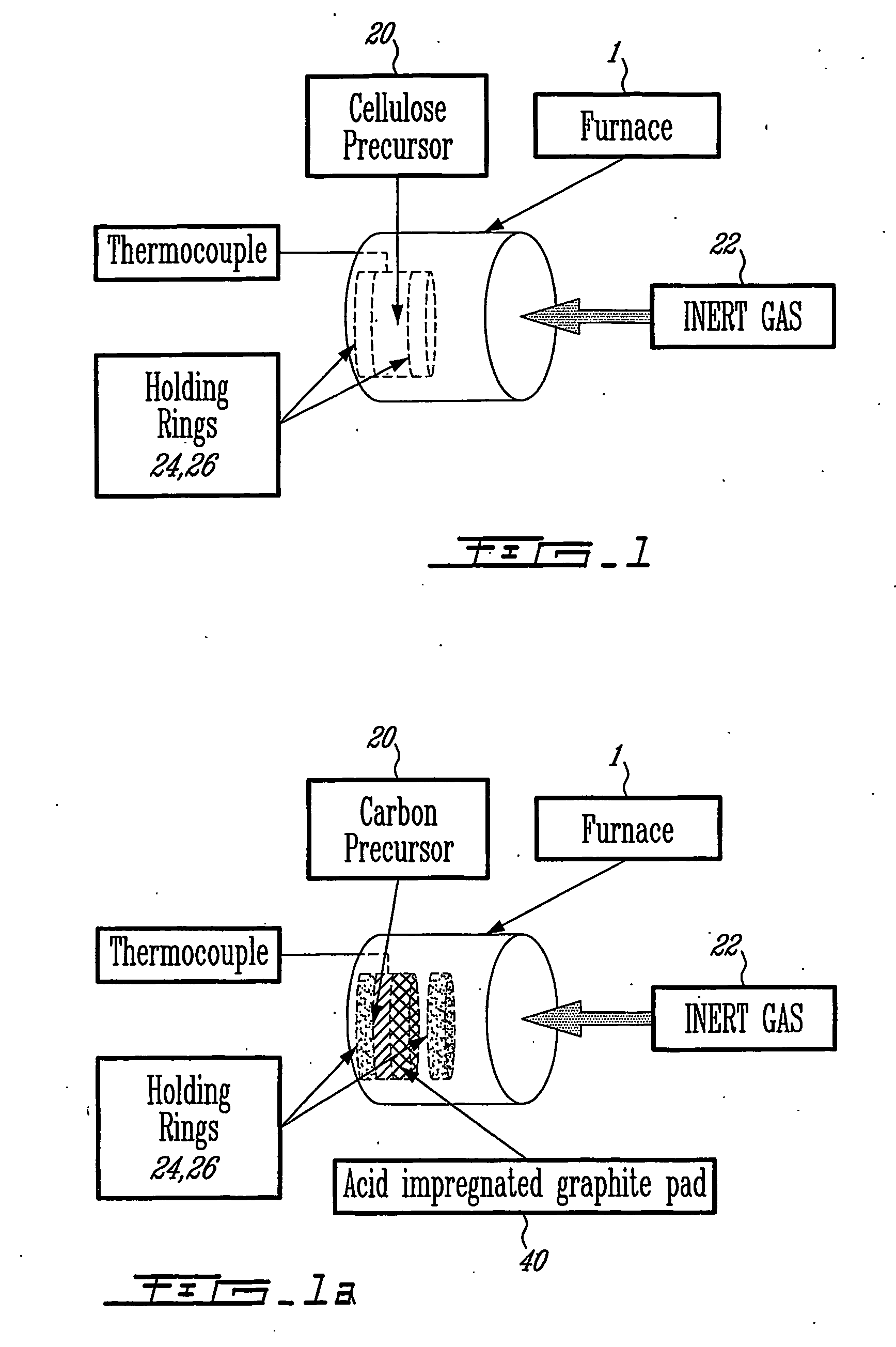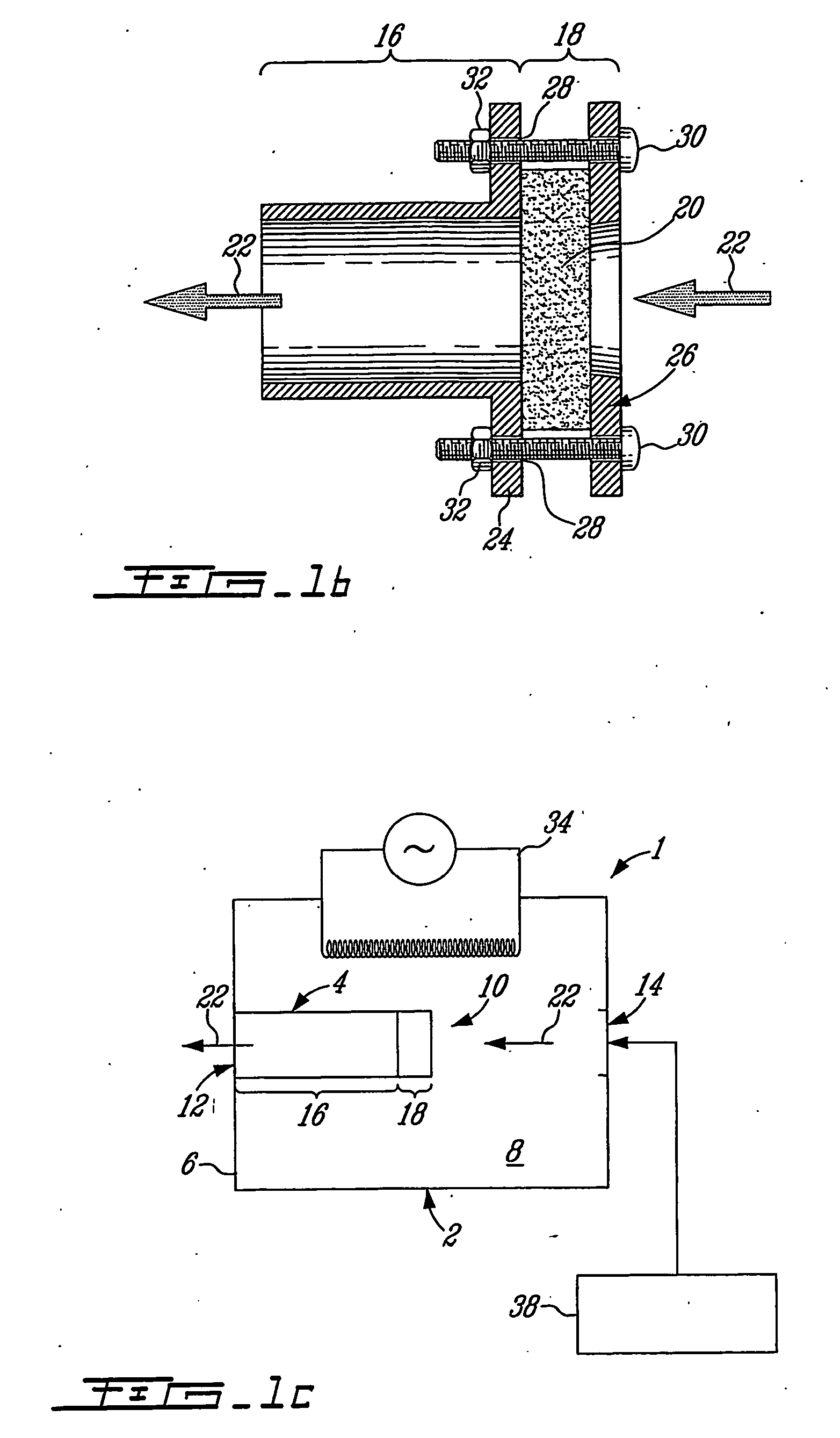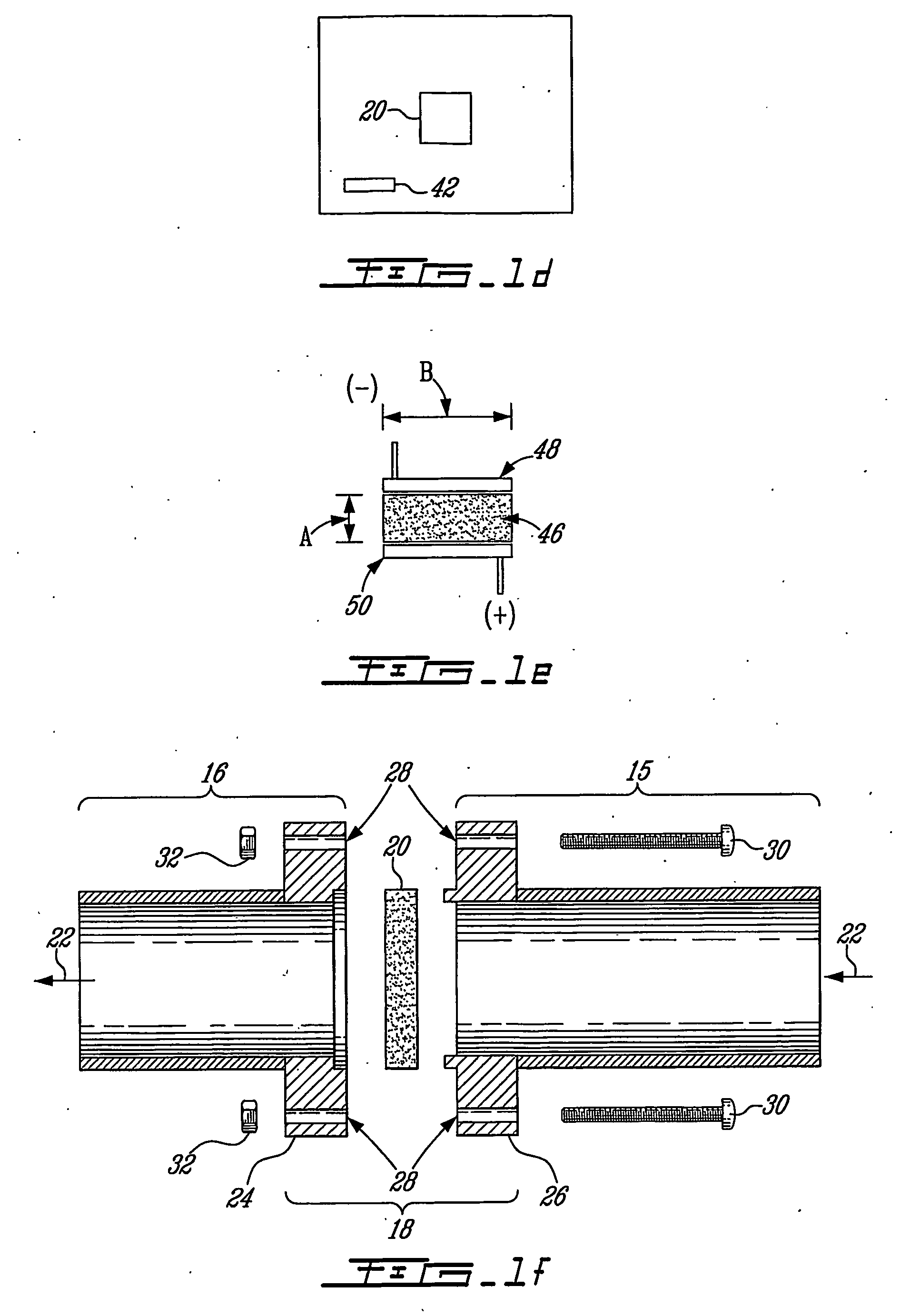Process for the production of activated carbon
- Summary
- Abstract
- Description
- Claims
- Application Information
AI Technical Summary
Benefits of technology
Problems solved by technology
Method used
Image
Examples
example 2
[0338] Preparation of a Medium Temperature (e.g. 250-400° C.) Char (Carbonization Stage) from Viscose Rayon Felt.
[0339] The washed Low Temperature Char prepared in example 1 was dipped in an impregnation solution consisting of 220 grams of phosphoric acid (85% w / v, fisher Scientific) in one litre acetone for 3 minutes with frequent turning and tamping to ensure uniform impregnation of the acid. The impregnated sample was allowed to drain off its excess impregnation solution and fixed to the platform of a horizontally rotting mixer and left to dry at room temperature in a fume hood for six hours for the removal of acetone.
[0340] The impregnated sample weighed 57.29 grams (33.8% phosphoric acid w / w (i.e. weight of phosphoric acid per weight of sample used for this example)).
[0341] Note that the non-washed Low Temperature Char could have been subjected to this acid impregnation step with similar results. Note also that a more homogeneous impregnation of the sample could have been ob...
example 3
[0346] Preparation of a High Temperature (e.g. 500-650° C.) Char (Aromatization Stage) from Viscose Rayon Felt.
[0347] The Medium Temperature Char in example 2 was dipped in an impregnation solution containing 321.5 grams of phosphoric acid (85% w / v) in one litre of acetone for 3 minutes with frequent turning and tamping. The excess impregnation solution was allowed to drain from the sample during a five minute period. It was then fixed to the platform of a rotating mixer and allowed to dry at room temperature in a fume hood for six hours for the removal of acetone. The acid impregnated sample weighed 45.3 grams (67.7% phosphoric acid w / w (i.e. weight of phosphoric acid per weight of sample used for this example)).
[0348] A same size graphite felt pad one centimetre thick provided by National Carbon was similarly treated (i.e. impregnated).
[0349] Both acid impregnated materials were placed in a holder (FIG. 1b) with the graphite pad placed in front (i.e. upstream) of the acid impre...
example 4
[0354] Preparation of an Elevated Temperature (e.g.>650° C.) Char (Pyrolytic Reformation Stage—Tempering from a High Temperature Char)
[0355] The High Temperature Char whose preparation is described in example 3 was dipped in an impregnation solution consisting of 360.0 grams of phosphoric acid (85% w / v) in one litre of acetone for 3 minutes with frequent turning and tamping to ensure homogeneous impregnation of the acid. The excess impregnation solution was allowed to drain from the sample for five minutes and it was then mounted on a rotating mixer for 6 hours at room temperature in a fume hood for solvent removal. The acid impregnated sample weighed 30.88 grams (50.9% phosphoric acid w / w (i.e. weight of phosphoric acid per weight of sample used for this example)). A similar size graphite felt pad 1 cm thick was similarly treated (see example 3). Both acid impregnated material were placed in a holder (FIG. 1c) with the acid impregnated graphite pad placed upstream of the acid impr...
PUM
| Property | Measurement | Unit |
|---|---|---|
| Temperature | aaaaa | aaaaa |
| Temperature | aaaaa | aaaaa |
| Temperature | aaaaa | aaaaa |
Abstract
Description
Claims
Application Information
 Login to View More
Login to View More - R&D
- Intellectual Property
- Life Sciences
- Materials
- Tech Scout
- Unparalleled Data Quality
- Higher Quality Content
- 60% Fewer Hallucinations
Browse by: Latest US Patents, China's latest patents, Technical Efficacy Thesaurus, Application Domain, Technology Topic, Popular Technical Reports.
© 2025 PatSnap. All rights reserved.Legal|Privacy policy|Modern Slavery Act Transparency Statement|Sitemap|About US| Contact US: help@patsnap.com



